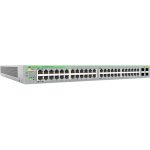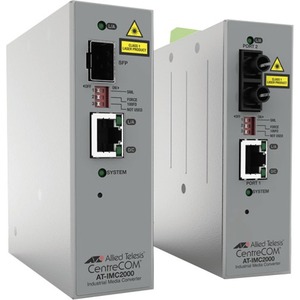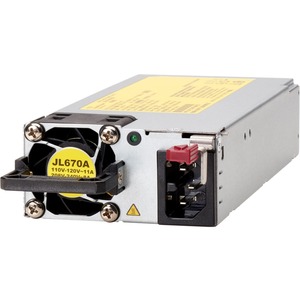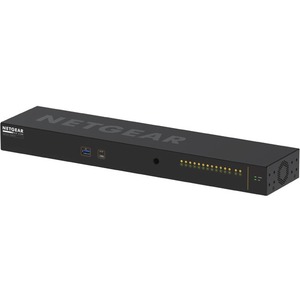Description
Allied Telesis IMC2000TP/SP Transceiver/Media Converter – 1 x Network (RJ-45) – Gigabit Ethernet – 10/100/1000Base-T, 1000Base-X – 1 x Expansion Slots – SFP (mini-GBIC) – 1 x SFP Slots – DC – Standalone, Rail-mountable – TAA Compliant
Powering remote devices
Allied Telesis 200/2000 Series Industrial Media Converters (IMCs) are ideal for powering remote devices, such as IP phones, video cameras and wireless Access Points (APs), which are more than 100m from a Power over Ethernet (PoE) switch. Each IMC can provide up to 60W of PoE.
The 2000T/SP and the 2000TP/SP each feature a 10/100/1000T twisted-pair port, and an SFP port which
supports and auto detects 100X and 1000X optics. No switch configuration is needed. Allied Telesis offers a wide variety of SFPs featuring multimode, single mode and BiDi optics.
Models with a fixed fiber-optic port are available with SC or LC connectors. With these, you can achieve distances up to 2 km (100Mps) or 550 m (1000Mps). With the SFP model, you can achieve greater distances using a long-range SFP.
In addition to transmitting data, the twisted-pair port also injects power down the cable, allowing a remote PoE powered device to operate without any additional power source. All PoE+ devices (IEEE802.3at compliant) are supported. All PoE+ devices support 802.3at, PoE+, LTPoE++ and 4-pair. The PC200x PoE+ Series can deliver up to 70W of power to the remote device.
Remote Power Cycle
The 200/2000 Series supports the Remote Power Cycle feature. When the fiber port is dropped, the TX PoE+ port cycles power. This allows a remote administrator to log in to a switch and disable the switch port to which the IMC is attached, which causes the PoE+ device to lose power. This allows administrators to reset remote devices without physically going to the location.
Jumbo frame support
Many backbone switch products support the industry-standard IEEE 802.1Q specification for Virtual LANs (VLANs) which sends extra-long data packets on the network. The 200/2000 Series are fully compatible with these long packets, enabling them to be used in modern networks.
Smart MissingLink™ (SML)
The SML feature monitors network connections and provides a notification when a link fails, allowing administrators to quickly identify the source and location of failed links, and thus minimize downtime.








